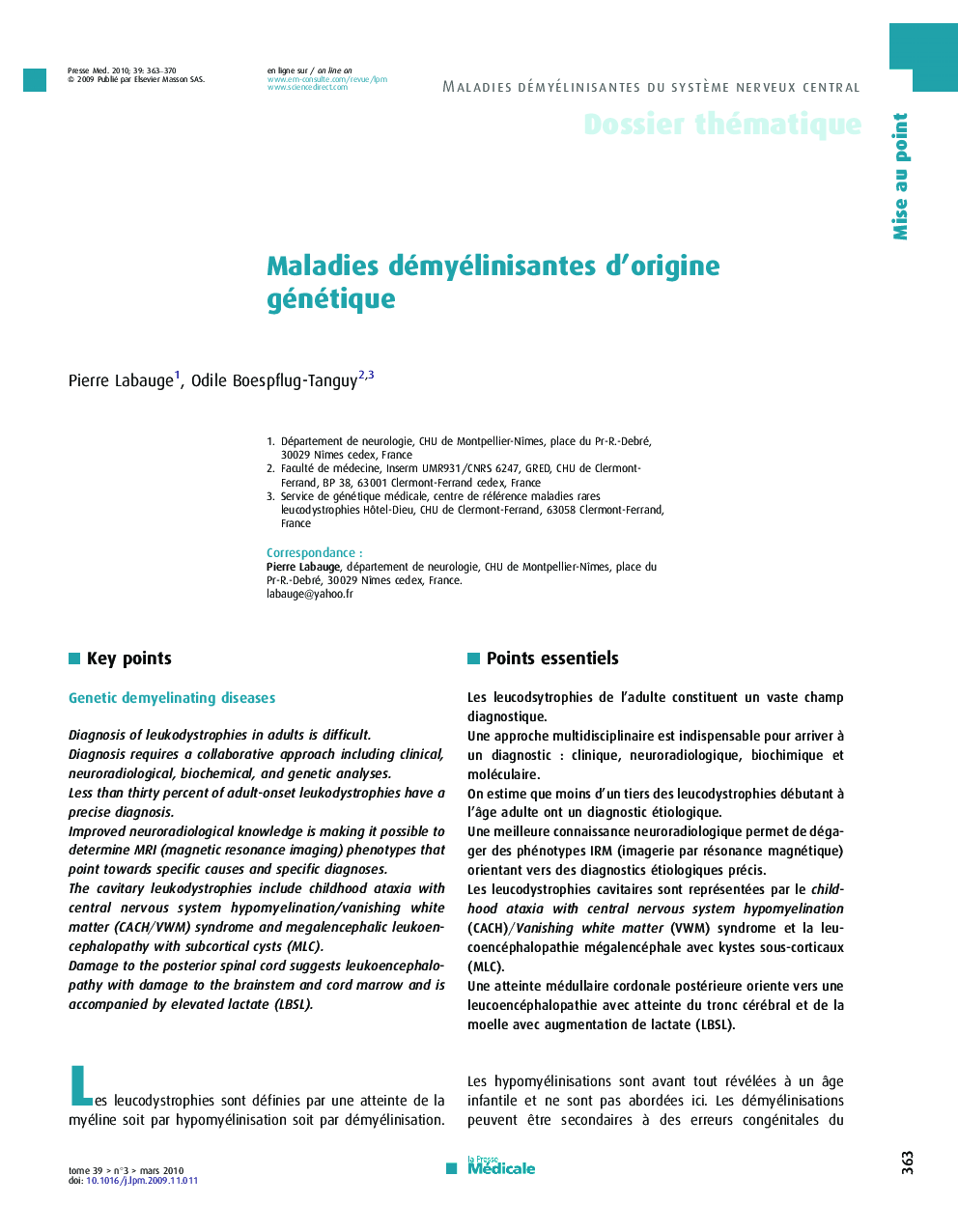| Article ID | Journal | Published Year | Pages | File Type |
|---|---|---|---|---|
| 3819525 | La Presse Médicale | 2010 | 8 Pages |
Points essentielsLes leucodsytrophies de l’adulte constituent un vaste champdiagnostique.Une approche multidisciplinaire est indispensable pour arriver à un diagnostic : clinique, neuroradiologique, biochimique et moléculaire.On estime que moins d’un tiers des leucodystrophies débutant àl’âge adulte ont un diagnostic étiologique.Une meilleure connaissance neuroradiologique permet de dégager des phénotypes IRM (imagerie par résonance magnétique) orientant versdes diagnostics étiologiques précis.Les leucodystrophies cavitaires sont représentées par lechildhood ataxia with central nervous system hypomyelination(CACH)/Vanishing white matter(VWM) syndrome et la leucoencéphalopathie mégalencéphaleavec kystes sous-corticaux (MLC).Une atteinte médullaire cordonale postérieure oriente vers une leucoencéphalopathie avec atteinte du tronc cérébral et dela moelle avec augmentation delactate (LBSL).
Key pointsDiagnosis of leukodystrophiesin adults is difficult.Diagnosis requires a collaborative approach including clinical,neuroradiological, biochemical, and genetic analyses.Less than thirty percent ofadult-onset leukodystrophies have a precise diagnosis.Improved neuroradiological knowledgeis making it possible to determine MRI (magnetic resonance imaging) phenotypes that point towards specific causes and specific diagnoses.The cavitary leukodystrophies includechildhood ataxia with central nervous system hypomyelination/vanishing white matter(CACH/VWM) syndromeand megalencephalic leukoencephalopathy with subcortical cysts (MLC).Damage tothe posterior spinal cord suggests leukoencephalopathy with damage to the brainstem and cord marrow and is accompanied by elevated lactate (LBSL).
